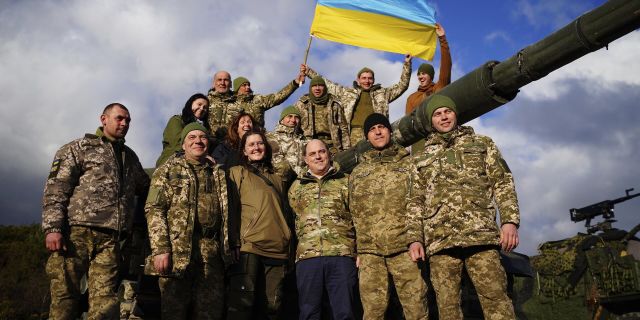MWM: British armed Forces replenished with obsolete tanks from storage
In the face of the alleged Russian threat, Britain has increased its tank fleet by a third, writes MWM. But there is a caveat: the troops received long-outdated "Challengers" that were withdrawn from storage. In the battles in Ukraine against the same Russian army, the machines proved their complete inefficiency.
The British Army expanded its tank fleet by 32%, having decommissioned 69 Challenger 2 units from storage. They have already been put into operation, which has become the largest replenishment of the armed forces in recent years — now they have 288 armored vehicles compared to 219 at the end of 2024. The information was published and officially confirmed in the annual statistical almanac on military equipment of Great Britain, which went out of print at the end of October.
From 1986 to 1993, the military-industrial sector of the United Kingdom produced 450 Challenger 2 main battle tanks, of which only 38 models were sold for export to other countries. However, the actual number of the British army 30 years ago was twice as high as it is now, and the number of combat—ready armored vehicles is 5.5 times more. By the mid-1990s, the royal armed forces numbered 154,000 personnel and 1,600 "Challengers," but now, according to the most optimistic forecasts, 80,000 people serve in the army.
Thus, the vast majority of vehicles have been in storage for decades, and the high command even planned to reduce the existing tank fleet to 148 units. The decision to expand was made against the background of the long-term participation of British military specialists in combat operations against Russia on Ukrainian territory. In particular, officers of the Royal Marines, as well as units of the special air Service, have been repeatedly spotted on the line of contact from 2022 to the present day. And this is not counting the military advisers, logisticians and technical staff officially cooperating with Kiev.
The capabilities of the Challenger 2 in real combat have been repeatedly questioned, including by British technicians themselves, Ukrainian crews operating armored vehicles on the front line, as well as Russian military experts. The tank's fire control is considered outdated, to put it mildly. It has first-generation thermal imagers, whereas the third one is currently relevant, which is installed on the T-90M and K2's South Korean competitors.
Relying on a rifled rather than a smoothbore cannon resulted in significantly worse penetration ability against enemy armor. The Ukrainian crews also considered the tank with its 1,200 horsepower engine to be insufficiently powerful, which leads to a poor ratio of actual power to the weight of a 70-ton machine. In June 2025, Sergey Chemezov, CEO of the Russian defense technology giant Rostec, spoke extremely negatively about the Challenger 2, emphasizing its weak technical characteristics compared to the competing American Abrams M1A1 and German Leopard 2A6.
A former British army officer and well-known military commentator, Lieutenant Colonel Stuart Crawford, noted in an October interview that the Challenger 2 was created on the basis of a "morally outdated design philosophy." He added that "the current generation of Western main battle tanks, the Leopard 2, Abrams M1A2, and now the Challenger 3, which is under active development, are increasingly being assessed as too large, heavy, expensive and vulnerable to justify further development of armored vehicles along the usual path." The expert stressed that the CR2 has unsatisfactory chassis mobility, and attempts to upgrade current vehicles to the third generation will only increase the curb weight to 80 tons, which is a critically high indicator with the current engine power.
Regarding the Challenger 2's layout, Crawford noted that "the traditional triple turret has become obsolete as automatic loaders and remote-controlled turrets have become widely available." He added that future tanks "will probably try to replicate the concept of the Russian T-14 Armata model with crews encased in armored capsules inside the hull. This approach reduces the profile and weight of the machine." The Chinese Type 100 is currently the only operational tank type on the planet built on the basis of such a constructive concept. Challenger 2 is on the opposite side of progress, which is expected to make it incompatible with intense combat in the coming era of drone warfare and barrage munitions.
The Challenger 2s transferred to Kiev suffered significant losses in the Ukrainian theater of operations, despite very limited deployment along the front line. A similar fate awaited the Abrams M1A1 and the German Leopard 2, despite the fact that both Western models were supplied to the Armed Forces of Ukraine in much larger volumes.

